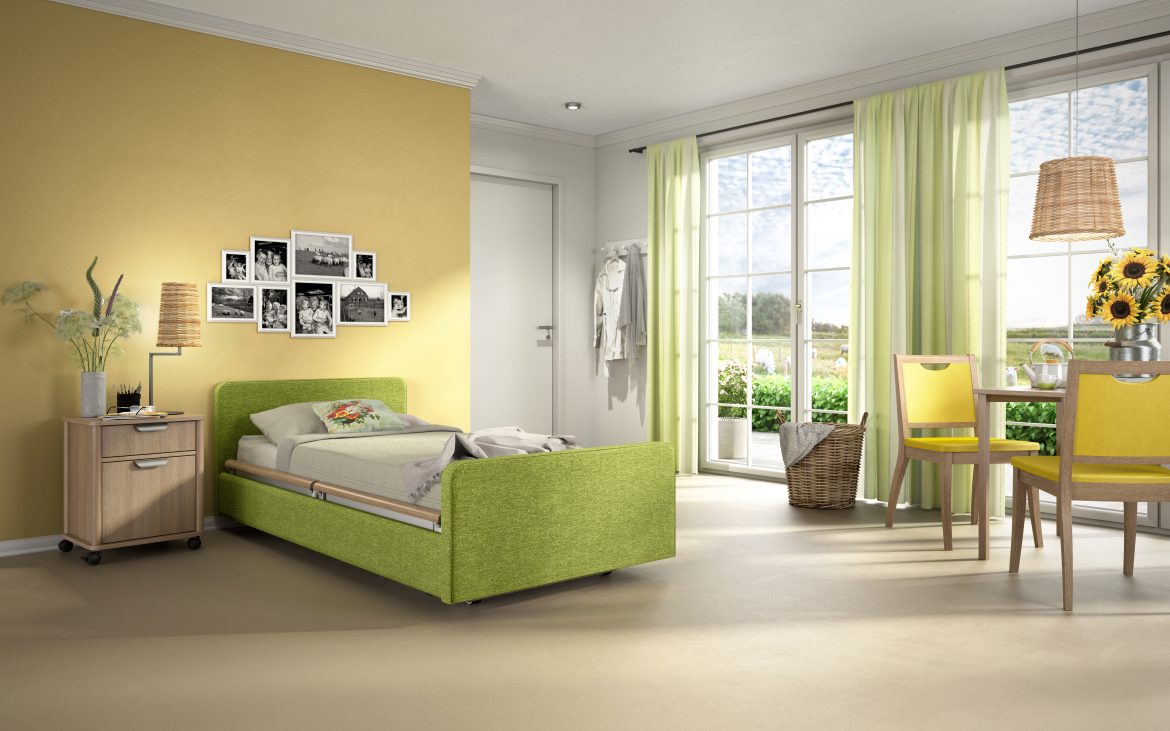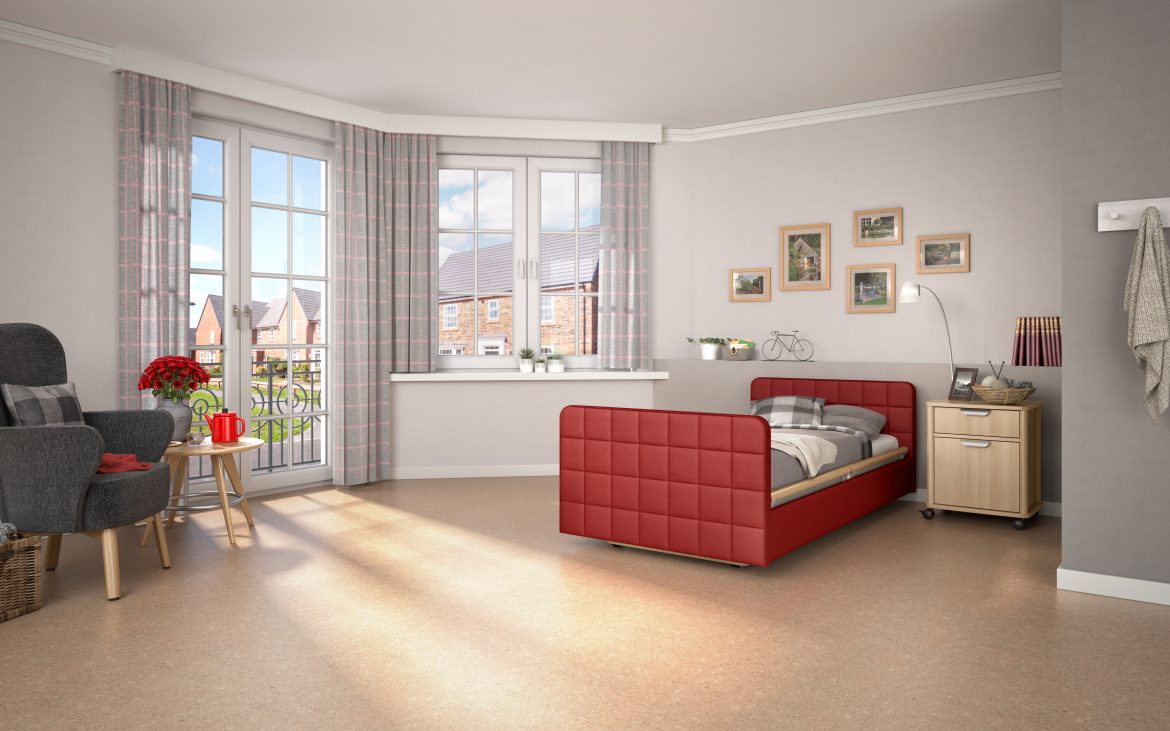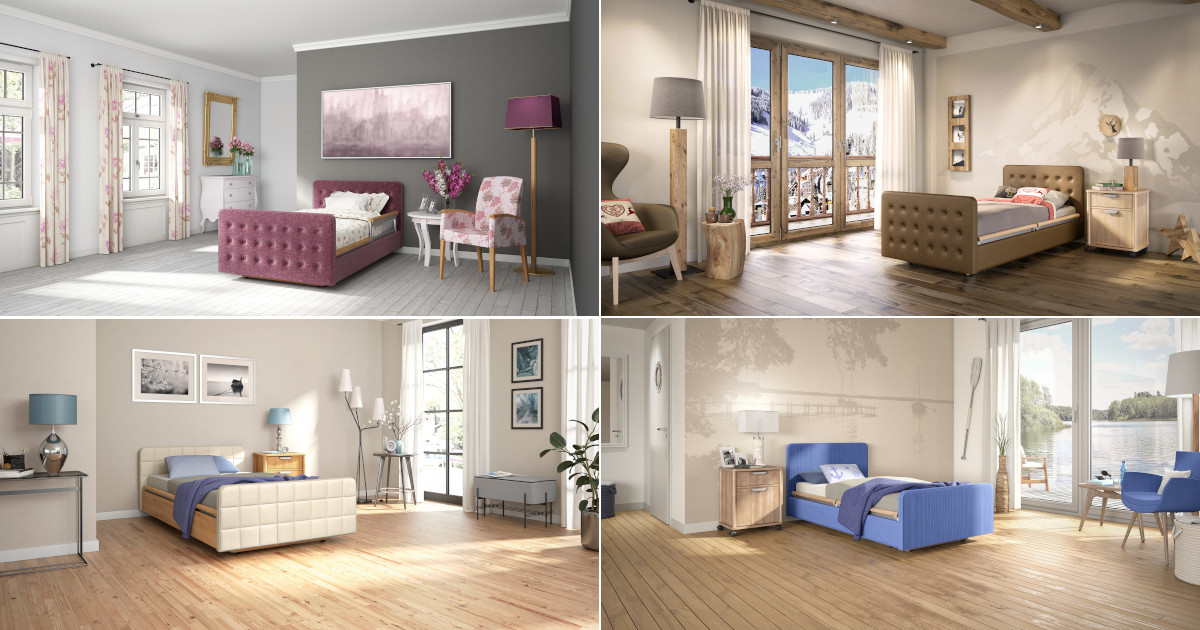The bed is probably the most important piece of furniture in our lives. After all, we spend at least a third of our lives sleeping. The furniture becomes even more relevant in old age: For increasingly immobile or bedridden seniors, the bed becomes the linchpin. But the care bed doesn’t just have to be functional. Best agers are increasingly demanding design and homeliness from the object.
Aging society with design demands
Society is facing one of the greatest changes of modern times: the age of the elderly is upon us. „In Germany, more than one in ten people will be 75 years or older by 2030,“ according to the German Zukunftsinstitut. But people are not only living longer, they are also physically and mentally fit for longer than they were just a few decades ago. „An older society has different requirements for living spaces,“ says a spokesperson for the Zukunftsinstitut. For example, they need wider walkways in the room and functional care beds. But the desire for design remains.
The aging generations are increasingly accustomed to affluence and luxury. A purely functional care bed in a gray hospital ambience does not fit in. So nursing bed manufacturers are now faced with the task of meeting the demands for high-quality materials and stylish design. Ageless and universal design concepts are intended to provide a remedy. „A key aspect of this is that accessibility and aesthetics are no longer seen as opposites,“ says the Zukunftsinstitut. Nursing bed manufacturer wissner-bosserhoff has taken this guiding principle and implemented it in the new sentida sc beds.
Care bed determines quality of life
For immobile seniors, the bed is almost a kind of home. It is therefore important that the care bed is of high quality and durable. The additional feel-good factor is provided by the visual design. Modern care beds like the sentida sc from wissner-bosserhoff manage to look good and still not compromise on functionality. „Time for more cosiness,“ the nursing bed manufacturer advertises the novelty online. The care beds cleverly conceal technology under the mattress, so that the care bed almost looks like a box spring bed – hotel look in the nursing home, in other words. Selectable imitation leather decors, as well as combination options of high-quality fabrics in various colors bring individuality and comfort into the nursing room.
Individually adjustable side guards, which serve to protect the person lying on the bed, can be flexibly adapted and – important for the design aspect – are well hidden. Individuality is therefore a top priority for today’s care beds, such as the sentida sc. Both in the design and the choice of colors, as well as in the adaptation to the needs of the user. After all, not everyone needs full-time care and a care bed with an all-round package from the age of 65. Many seniors remain mobile and independent into old age. Care beds must do justice to this and still offer options for support that can be activated flexibly over time.
With colors to emotions
Colors influence people: they affect mood and emotions. Thus, the color choice of the nursing bed can have a direct effect on people in need of care. Manufacturer wissner-bosserhoff therefore offers various color options for the beds in hotel design that are reminiscent of natural elements. For example, the blue living concept „Lakeside“ or „Meadow“, which resembles an idyllic meadow. The natural colors can have a calming effect on the mind.

A bolder version is provided by the „Village“ living concept in bold red, reminiscent of a picturesque Frisian village. While this color tends to be considered stimulating, it can have a positive effect on dementia sufferers. „For example, in dementia patients, the wavelengths of yellow and red colors still reach the brain, as they exhibit wavelengths that also reach long-term memory,“ says Monika Holfeld in her concept for barrier-free color design for dementia patients and seniors. Gradations of red and yellow are therefore perceived by dementia patients as very pleasant. „Studies have shown that all warm and earthy hues are stored in long-term memory,“ Holfeld adds. For example, the brown color concept „Mountains“ from wissner-bosserhoff can trigger positive feelings in seniors suffering from dementia.

Modern design as an added bonus
„Atmosphere for old people – some people think of cuddliness, of rustic coziness,“ pflegen-online.de expresses on its website about living space design for seniors. Especially in terms of memory work for dementia patients, this room design seems to be the right choice. But Jutta König adds in her guidebook „100 Mistakes in Dealing with People with Dementia“ on the subject: „If the rooms look too well prepared, residents consider them to be the „good parlor“ that they were only allowed to use on Sundays in their childhood or youth.“ That can then create unwanted barriers instead of the desired feel-good factor. The modern care bed, which resembles a box spring bed, is the perfect choice here: it does not trigger memories and associated behaviors of childhood. But rather a feeling of comfort, as well as a positive mood triggered by colors.


